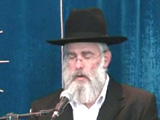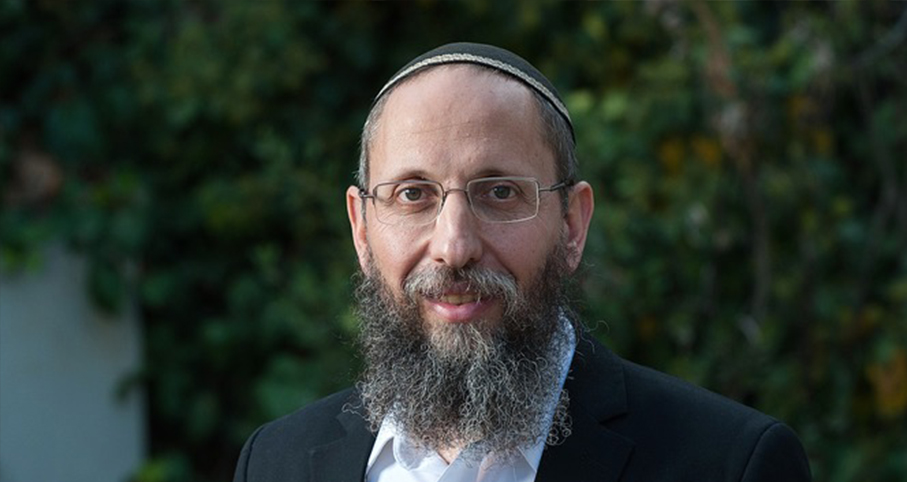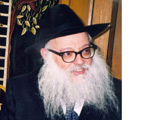Beit Midrash
- Shabbat and Holidays
- Purim & The Month of Adar
- The Laws of Purim
- Shabbat and Holidays
- Purim & The Month of Adar
- Purim in Our Time
Purim Cairo and Purim Frankfurt
Is there a halachic basis for the various local observances, such as Purim Frankfurt, Purim Cairo and Purim Ancona?
Answer: Local Purims
In the course of Jewish history, there have unfortunately been numerous occasions when communities suffered from major crises that threatened their survival. We began talking about this topic last week, and this article is a continuation of that discussion.
Other methods of celebration
Since the Pri Chodosh rejects the creation of new holidays as long as the Beis Hamikdash is destroyed, how should one thank Hashem for saving him? In the time of the Beis Hamikdash, an individual thanked Hashem by offering a korban todah (see Brachos 54b), but what does one do now that it is destroyed? Many authorities approve making a festive meal, called a seudas hodaah, instead, to commemorate the occasion, but the Pri Chodosh himself considers these meals seudos reshus and not seudos mitzvah, implying that he does not consider this the most appropriate way to acknowledge thanks to Hashem.
Another option is to bensch gomel as the fitting acknowledgment of thanks. However, bensching gomel is not always the appropriate approach, as the next discussion will indicate.
Should someone bensch gomel when saved from a situation where he was willing to give up his life al Kiddush Hashem?
The Chida, in his Machazik Brocha commentary to Shulchan Aruch (219:1-3), presents a lengthy correpondence that transpired between his father and another talmid chacham, Rav Eliezer Nachum. Rav Yitzchak Zerachyah Azulai, the Chida’s father, contended that only someone who was placed in a situation involuntarily, including one who traveled by sea or through the desert because circumstances compelled him to endanger himself, recites birkas hagomeil, but not someone who chose to give up his life to fulfill the mitzvah of Kiddush Hashem. Even when someone in the latter situation is saved by an obvious miracle, he should not recite birkas hagomeil since, had he lost his life, he would immediately have been elevated above all that this world could possibly offer. Similarly, he rules that the kohen gadol does not recite birkas hagomeil upon leaving the kodesh hakodoshim on Yom Kippur, since his entering was to fulfill the mitzvah of Hashem. Furthermore, he adds, a kohen gadol worthy of his position was never in any danger to begin with – only an unworthy kohen gadol need be concerned of the dangers of entering the kodesh hakodoshim on Yom Kippur.
Rav Elazar Nachum disagreed strongly with Rav Azulai’s position. Rav Nachum notes several midrashic and Talmudic passages that mention the tremendous songs of praise that were sung by great tzadikim upon surviving these travails. Certainly, upon surviving these dangers one is required to recite birkas hagomeil to thank Hashem for his salvation.
Hallel?
The Pri Chodosh could accept the ruling of the Meiri that one may recite Hallel without a brocha, since this does not declare that the day is holy. However, any observances that imply giving sanctity to the day, such as prohibiting fasting and eulogies or banning people from working, are not binding, according to the Pri Chodosh.
Later authorities
Notwithstanding that the Pri Chodosh disputed the conclusion of the Maharam Alashkar, two highly respected later authorities, the Chasam Sofer and the Chayei Odom, both reject the Pri Chodosh’s analysis and rule according to the Maharam Alashkar. The Chasam Sofer (Shu’t Orach Chayim #191) demonstrates that a holiday created to thank Hashem for a miracle He performed has halachic significance and must be observed -- unlike the special days recorded in Megillas Taanis. Nevertheless, the Chasam Sofer adds a qualification -- a community can create a special festival only when they were saved from a life-threatening situation.
The Chasam Sofer concludes, like the Maharam Alashkar, that the takkanah to observe a holiday may be binding even on descendants of town residents who no longer live where the salvation occurred. He notes that his rebbe, Rav Nosson Adler, a Frankfurt native, observed Purim Frankfurt even when he did not live in Frankfurt. However, when living out of Frankfurt, Rav Nosson Adler did not fast on the day before Purim Frankfurt. The Chasam Sofer assumes that this was because Rav Adler held that observing the fast while in a different community may conflict with the customs of where he was currently living, and halachah prohibits acting in a manner different from local practice. The Chasam Sofer, who was always proud that he had been born in Frankfurt, lived the rabbinic years of his life outside of Germany. He records that, although he did not fast on the day before Purim Frankfurt, he conducted a siyum mesechta on that day in order to supersede any requirement to fast, similar to our practice on Erev Pesach.
Chayei Odom
Another later authority who rejected the Pri Chodosh’s criticism of the Maharam Alashkar’s ruling was the Chayei Odom (155:41). He concluded that an individual, and certainly a community, can establish a day to be their own festival. Based on the ruling of the Maharshal, which I will quote shortly, the Chayei Odom ruled that a meal observed because of a community’s thanksgiving has the halachic status of a seudas mitzvah. Futhermore, the Chayei Odom contended that had the Pri Chodosh seen what the Maharshal wrote (Yam shel Shelomoh, Bava Kama 7:37), which the Chayei Odom notes was not yet printed in the days of the Pri Chodosh, the Pri Chodosh himself would also have accepted that these thanksgiving seudos qualify as seudos mitzvah.
What did the Maharshal write that the Chayei Odom felt was so authoritative?
Seudas Hodaah
The Maharshal cites a different Gemara source and rationale for the practice of celebrating a festive meal in honor of salvation. The Gemara (Bava Kama 80a-b) mentions that Rav, Shmuel and Rav Assi all attended a seudas mitzvah, which, according to one version of the Gemara, was probably a pidyon haben. The Maharshal notes that the Gemara (Chullin 95b) states that Rav never ate from a festive meal unless it was a seudas mitzvah. Furthemore, we do not find that the Gemara characterizes pidyon haben as a seudas mitzvah. Therefore, asks the Maharshal, why Rav would have participated in this seudah? The Maharshal answers that making a festive meal in order to bring attention to the observance of a mitzvah or to thank Hashem that a miracle happened is a seudas mitzvah. He then quotes an earlier authority who held that a pidyon haben qualifies as a seudas mitzvah (Terumas Hadeshen #269).
The Chayei Odom concludes halachically like the Maharshal that celebrating salvation by Hashem with a festive meal qualifies as a seudas mitzvah.
Private Purim
The Chayei Odom closes his remarks on this topic by noting that he actually established a Yom Tov for himself and his descendants because of a salvation that his family experienced. On the evening of the 16 th of Kislev 5564 (1803), a gunpowder explosion blew up several buildings in the area where the Chayei Odom lived, killing thirty-one people. Every member of the Chayei Odom’s family suffered injuries, his wife most severely. The windows and door of the room imploded and the walls and sections of the roof crashed. The Chayei Odom thanked Hashem that, although he suffered major financial loss from the catastrophe, every member of his family survived.
To commemorate the event, the Chayei Odom instituted that the physically-able members of his family and his descendants should fast on the 16 th of Kislev. The night after the fast they should gather immediately after maariv to kindle lights as one does on Yom Tov, recite the entire Shir Hayichud, slowly and with the accustomed melody, as is the custom after maariv on Yom Kippur night. The Chayei Odom’s observance continues: After reciting Shir Hayichud, they should recite Anim Zemiros with a festive tune, and then read slowly through sixteen selected chapters of Tehillim. After this ceremony, they should give as much tzedakah as they are able and those descendants who can financially afford it should sponsor a seudah for scholars who study Torah.
Festival of the Tosafos Yom Tov
Similar to the way the Chayei Odom observed his own family Purim was the observance of a much earlier gadol beyisrael, the Tosafos Yom Tov. In 5387 (1627), the Tosafos Yom Tov became the rav of the entire region of Bohemia (now an area in the Czech Republic). The Thirty Years War was escalating, and the government imposed a heavy tax on the Jewish community to help pay war costs. As rav, the Tosafos Yom Tov headed the committee charged with the responsibility of levying the share each individual was required to pay of the collective tax. Naturally, there were those who felt that they had been assessed too high, and some unscrupulous individuals were vicious enough to turn to the government with a list of defamatory accusations against the Tosafos Yom Tov. On the 5 th of Tammuz 5389 (1629), he was summoned to the capital, Vienna, and there he was sentenced to a large fine and imprisonment as punishment for the slanderous canards. When he was freed from prison, he declared the 5th of Tammuz, the day on which his troubles began, as a fast for his descendants, but he did not have it followed by any celebration since he was still in trouble and had no reason to rejoice. For fifteen years, he experienced repeated sufferings. However, when on Rosh Chodesh Adar, 5404 (1644), he became the rav of Krakow, Poland, which was out of the range of the Austro-Hungarian Empire, he felt that salvation was finally achieved and he proclaimed a family festival as a result. Unfortunately, there is a bitter ending to this celebration, because four years later the Chmielnitzki revolt and massacres began. I have written about this topic elsewhere (see RabbiKaganoff.com, The Twentieth of Sivan.)
Other commemorations
Other gedolei Yisrael chose to commemorate their salvation in other ways. The Pnei Yehoshua decided to write his sefer, which is one of the most basic works on Shas, because he survived a fire and explosion.
Halachic conclusion
The later halachic authorities did not accept the Pri Chodosh’s concern and ruled that one may observe special local festivals to thank Hashem for salvation. We have seen three different sources for observing local festivals:
1. To recite Hallel to commemorate Hashem’s salvation.
2. The authority of a community to establish a festival and regulations.
3. A festive meal to thank Hashem qualifies as a seudas mitzvah.
Unusual local purims
Having discussed the halachic background for these festivals, let us note some curious aspects of some of these local celebrations.
Four Purims
To the best of my knowledge, the record for local Purims was held by the Jewish community of Ancona, Italy, which observed four different dates as special festivals, each in thanks to Hashem for being saved from a different catastrophe: revolutionary riots, an earthquake, and two fires. As was done with Purim Frankfurt and Taanis Esther, they observed a fast on the day before.
Double Purim
One of the unusual observances was Purim Rhodes, which was celebrated on the day of Purim itself! In 5600 (1840), a gentile child disappeared and the Jews were accused of the frightening blood libel -- slaughtering the child to use his blood for matzohs. The local governor was behind the incitements against the Jews. As the Jews prepared for what they expected to be their last Purim, the child was found alive on a neighboring island. The sultan deposed the governor, and gave the Jews a firman declaring that the accusation of ritual murder was false. As a result, the Jews of Rhodes read special prayers and hymns on Purim to commemorate their communal miracle.
Kol Yisrael areivim
One very early observance serves as a reminder of how each Jew must assume responsibility for all his brethren. On the 21 st of Adar, 1236, in Narbonne, France, the rash action of one Jew who struck a gentile in an argument, killing him, endangered the entire community. A mob rioted, threatening to kill everyone in the Jewish quarter. Fortunately, the local officer and his soldiers arrived just in time to avert calamity. This should serve as a powerful reminder of how one thoughtless Jew can endanger all.
Being locked in the ghetto
One of the oddest reasons for a local festival occurred on the 18 th of Tammuz 5367 (1607) in Verona, Italy, the day after a fast day. The Jews there had been confined to sleeping overnight in a locked ghetto for the previous eight years. They requested that they be the holders of the keys to the gates of the ghetto, rather than being locked in. This plea was finally granted, and from then one the date the plea was granted was celebrated as a Purim! Its observance continued until Napoleon abolished the ghetto. (We should note that according to the above-quoted Chasam Sofer, this would not have been sufficient reason to have created a local festival.)
Conclusion
Rav Hirsch (Commentary to Tehillim 100:1) notes that the root of the word for thanks is the same as that for viduy, confession and admitting wrongdoing. All kinds of salvation should elicit in us deep feelings of gratitude for what Hashem has done for us in the past and does in the present. This is why it can be both an acknowledgement of guilt and thanks.
We often cry out to Hashem in crisis, sigh in relief when the crisis passes, but fail to express our thanks adequately for the salvation. Our thanks to Hashem should match the intensity of our pleas. In our daily lives we hopefully do not encounter the types of dangers that we have described above, yet we should still fill our hearts with thanks, focus these thoughts during our recital of mizmor lesodah, az yashir, modim or at some other appropriate point in our prayers.
This Shiur is published also at Rabbi Kaganof's site
1. What Is a Walled City?
Chapter 17: Walled and Unwalled Cities
Rabbi Eliezer Melamed | Adar I 8 5782
2. Jerusalem and Its Environs
Chapter 17: Walled and Unwalled Cities
Rabbi Eliezer Melamed | Adar I 8 5782


























